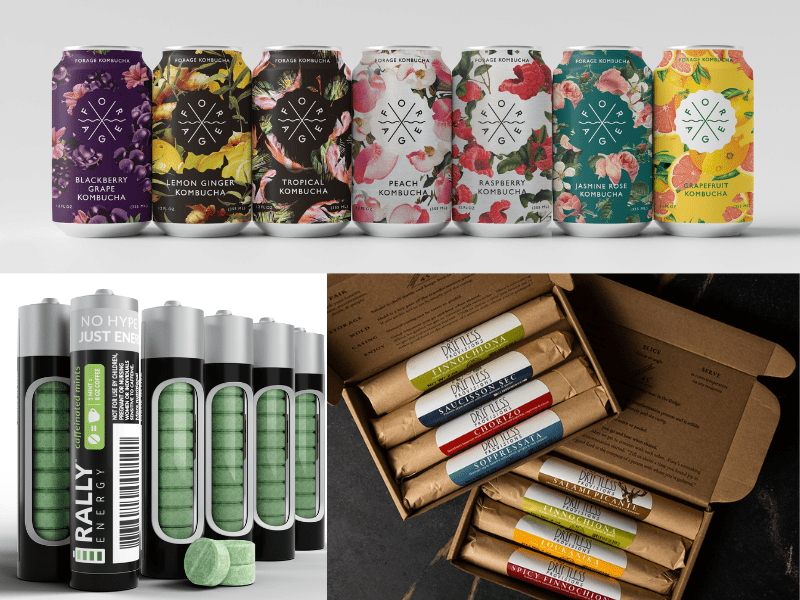There are so many things to consider when doing market research. This includes researching the trajectory of the category the product is in (is it growing? is it crowded?). This includes researching consumer needs and preferences as a whole to determine where the consumer is trending so that the entrepreneur can design products and messaging that resonate. And, because the entrepreneur and their products do not operate in a vacuum, market research could also include competitor research and researching the actual market size/market potential of particular products in particular locations and channels. That is a lot of research!
Market research also includes figuring out, as best the entrepreneur can, the precise profile of the target consumer they are trying to reach. Realistic assumptions need to be made about whether the product resonates with consumers and these assumptions need to be tested and changed if necessary. These assumptions can be validated through formal or informal methods, including having a minimum viable product that is demoed and tested in a limited way with real people. Assumptions can also be validated through aggressively monitoring velocity data once the product is in grocery stores, as well as how much promotional spend is necessary to move the product (i.e. is the product only moving when the price is radically discounted?).
Sometimes, market research can confirm things about the changing consumer that don’t fit with your location’s perceived identity or strengths. In our most recent podcast interview, Barnett Sporkin-Morrison, the Director of the Great Falls Montana Development Authority’s Food and Agricultural Development Center in rural Montana reflected on the tension and opportunity in plant-based protein production as a means of rural economic development. Barnett sees the biggest opportunity for his region, in the short term and the long term, in the plant-based alternative proteins foods market, given his area’s reputation as the “Golden Triangle” for producing pulse crops. However, plant-based and especially cellular based protein and meat alternatives are sometimes met with controversy/skepticism in Montana, where cattle is king.
Market research can feel daunting given the sheer volume of things that must be considered, tested and acted upon. But, good research helps ground the entrepreneur in reality and iterate on products and business models that can achieve their business goals, even if it disproves their original assumptions.
And now, our roundup of the best food and beverage finance news, events and resources from around the web…
Business Model Insights
- The 5 Mistakes Food Startups Make, With Sari Kimbell (Real Food Brands Podcast) – “Even if you’re turning a profit at the farmer’s market, that doesn’t necessarily mean that you’re operating at the kind of margins you need to expand to sell regionally, on Amazon, or nationally. You need to understand your Cost of Goods Sold (COGS) and build in margins for retail and online sales. The distribution channel, whether it’s your local Co-op or Amazon, gets a cut and you need to build that into your price so you’re not giving your customers pricing whiplash.”
- 7 Tips To Help You Prevent Cash Flow Crunch (Investors Community Bank)
- Answering five key questions can reveal how entrepreneurs can identify and beat the competition (Food Navigator USA)
 Raising Capital
Raising Capital
- How Companies Should Prepare Their Forecasts (Harvard Business Review) – “A great forecast has five attributes. First, it includes projections of operating results and resource needs for the next 3-5 years. Second, a great forecast reflects the firm’s industry context. It should be consistent with estimates of the size of the firm’s total addressable market and insights about how that market is evolving. Third, the firm’s strategic choices should form the basis for assumptions about how it will grow and what resources it will require. Fourth, projected growth rates and margins should reflect the competitive dynamics the firm faces. Finally, a great projection and the subsequent after-the-fact analysis involves action items for non-financial executives and their teams.”
- Female founders: Hitting roadblocks raising capital? Here’s what you can do. (New Hope Network)
- 4 things investors want to see in your food tech startup (New Hope Network)
CPG/National Brands
- How to know when your brand is ready to hit Kroger shelves (New Hope Network) – “If you can serve a full Kroger Division (about 150 stores) then you can start to approach the buyer and plan for a launch if you get accepted. Data from Kroger or other store sales as well as trend data helps tell your story and make the case that you could fulfill a customer need. Kroger really likes to see strong trial and repeat numbers.”
- How CPG companies reinvent manufacturing to improve efficiency (FoodDive)
- How to build and sustain your store brands programs in the face of change (Store Brands)
Market Trends
- US organic sales break through $50B mark in 2018 (New Hope Network) – “Organic food sales reached $47.9 billion, for an increase of 5.9%. Sales of organic non-food products jumped by 10.6% to $4.6 billion. The growth rate for organic continued to easily outpace the general market: in 2018, total food sales in the U.S. edged up just 2.3% while total non-food sales rose 3.7%.”
- Meal Kits Move to Grocery Stores — And Walmart, Whole Foods and Kroger are Taking the Lead (US Chamber of Commerce)
- Consumers are Dining Less Due to Financial Concerns (Specialty Food News)
 Farming and AgTech
Farming and AgTech
- Farm Financials: Cash Flow and Profitability Aren’t the Same Thing (Compeer Financial) – “An operation is legitimately profitable if its Rate of Return on Assets is higher than the interest rate being paid on farm loans. Also, its Rate of Return on Equity is higher than the Rate of Return on Assets. When we say a farm is profitable perhaps what we really mean is that the operation generates an adequate amount of cash flow to continue into the future. Adequate cash flow covers all operating expenses, family living costs, income tax and Social Security payments, loan payments, replacing equipment, while still having cash left to put into reserves. Cash flow doesn’t tell us if the farm is a good investment, it just tells us if it can sustain itself.”
- Who Are the Most Active AgriFood Tech Investors? (AgFunder News)
- Big Food turning to regenerative agriculture to meet sustainability goals (FoodDive)
 Deals/M&A
Deals/M&A
- What are the key ingredients to highly valued food and beverage brands? (FoodDive) – “A significant part of achieving a premium valuation is crafting the story, positioning the brand and articulating the future growth potential. The fundamental question then becomes: which attributes of a food and beverage brand really drive value? Investors generally like to see gross margins in excess of 40% for branded food and beverage companies, but each category is different. For instance, frozen food margins may be lower. A high gross margin is evidence of a brand offering something unique or value-add to a retailer.”
- NCN News May 2019 (Nutrition Capital Network)
- Kroger launches brand accelerator (GroceryDive)
 Industry Events
Industry Events
- Food Funded 2019 (Slow Money Northern California) – $, 6/6 in San Francisco, CA
- Hirshberg Entrepreneurship Institute 2019 (Hirshberg Entrepreneurship Institute) – $, 6/6 – 6/7 in Boulder, CO
- Nosh Live Summer 2019 (Project Nosh) – $, 6/10 – 6/11 in New York, NY
- Summer Fancy Food Show (Specialty Food Association) – $, 6/23 – 6/25 in New York, NY
- From Grain To Plate (Meadowlark Organic Farm) – Free, 6/30 in Ridgeway, WI
- Expo East 2019 (New Hope Network) – $, 9/11 – 9/14 in Baltimore, MD
- Food Culture Forecast (Hartman Group) – $, 9/29 in Chicago, IL
- Food and Ag Ideas Week (Grow North MN) – $, 10/15 – 10/20 in Minneapolis, MN
- National Farm Viability Conference 2019 (Multiple Hosts) – $, 10/22 – 10/24 in Redwing, MN
- Annual Farmer Cooperatives Conference (University of Wisconsin Center For Cooperatives) – $, 11/6 – 11/8 in Minneapolis, MN
- Good Food Financing and Innovation Conference (FamilyFarmed) – $, 11/3 in Chicago, IL
- Business Tax Basics (UW-Madison SBDC) – $, 11/19 in Madison, WI
- National Good Food Network Conference (Wallace Center) – $, 3/10 – 3/13 in New Orleans, LA




